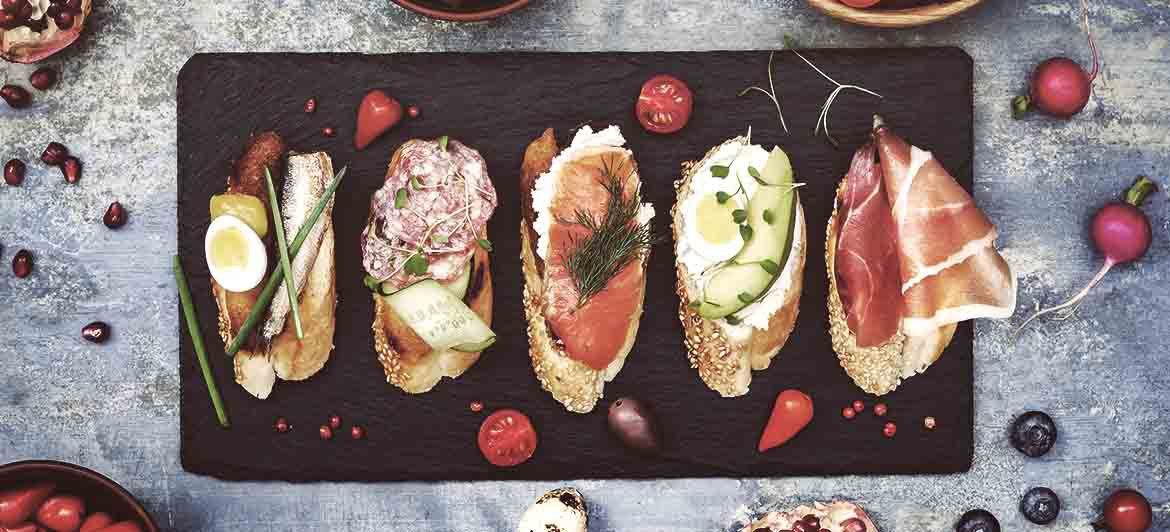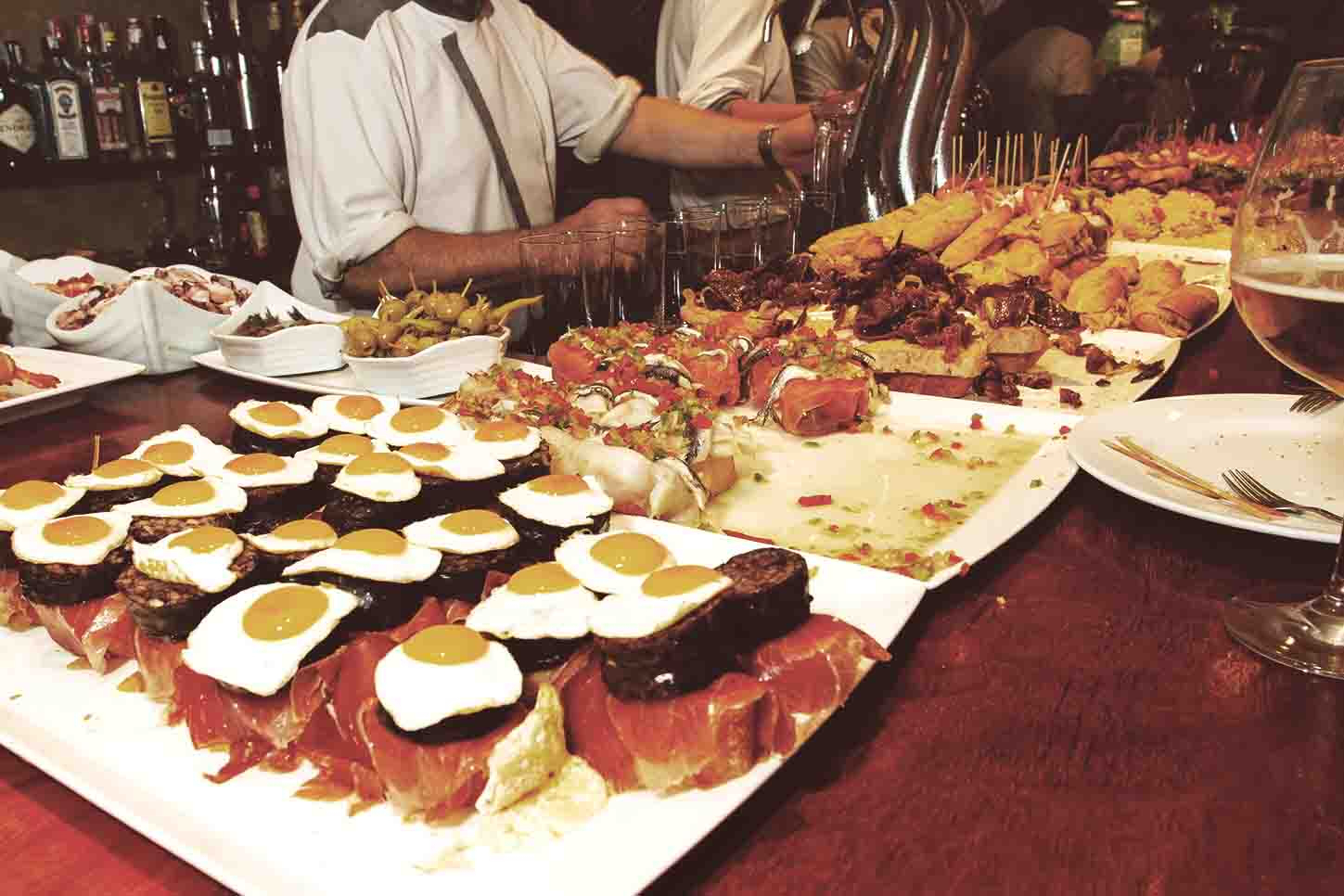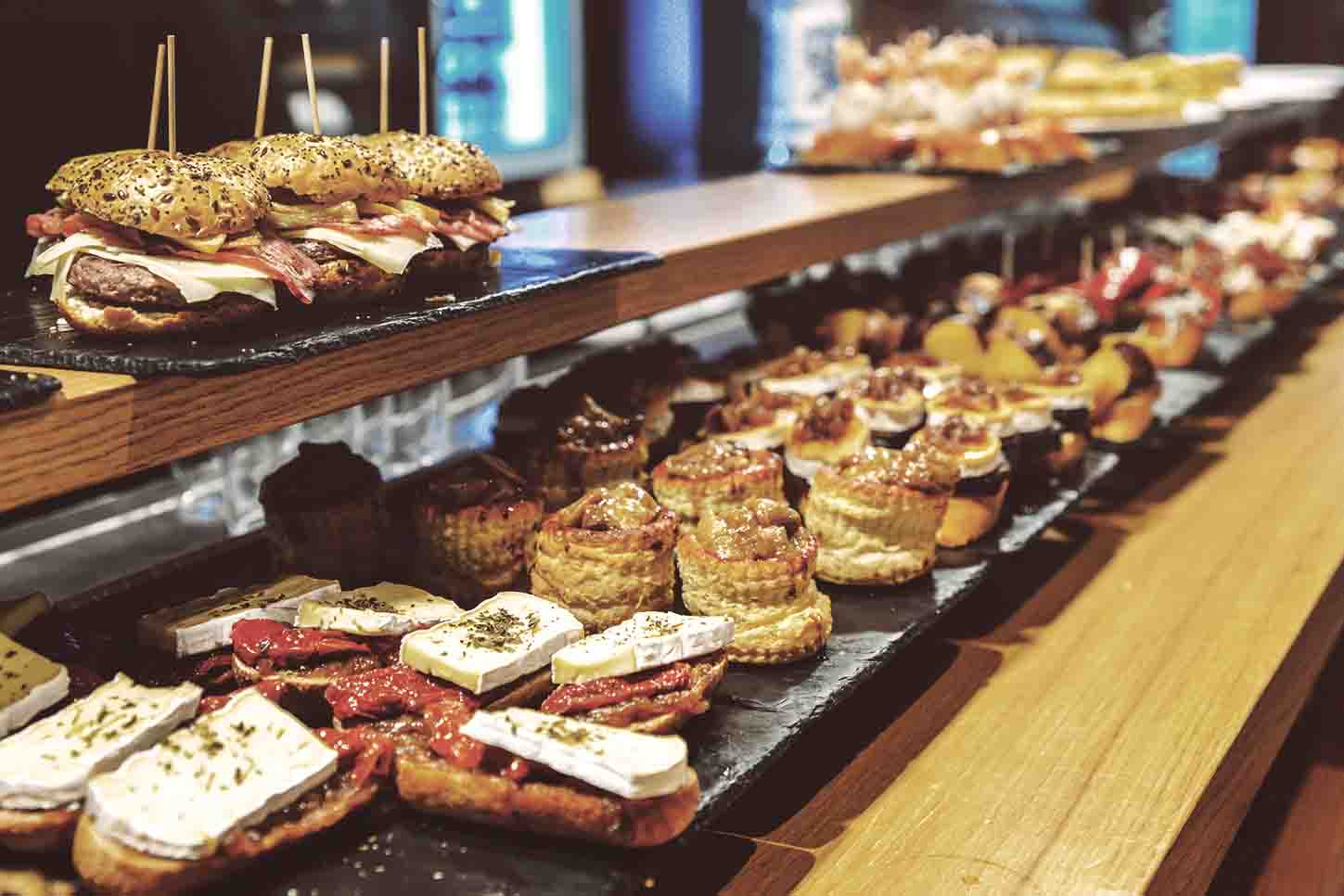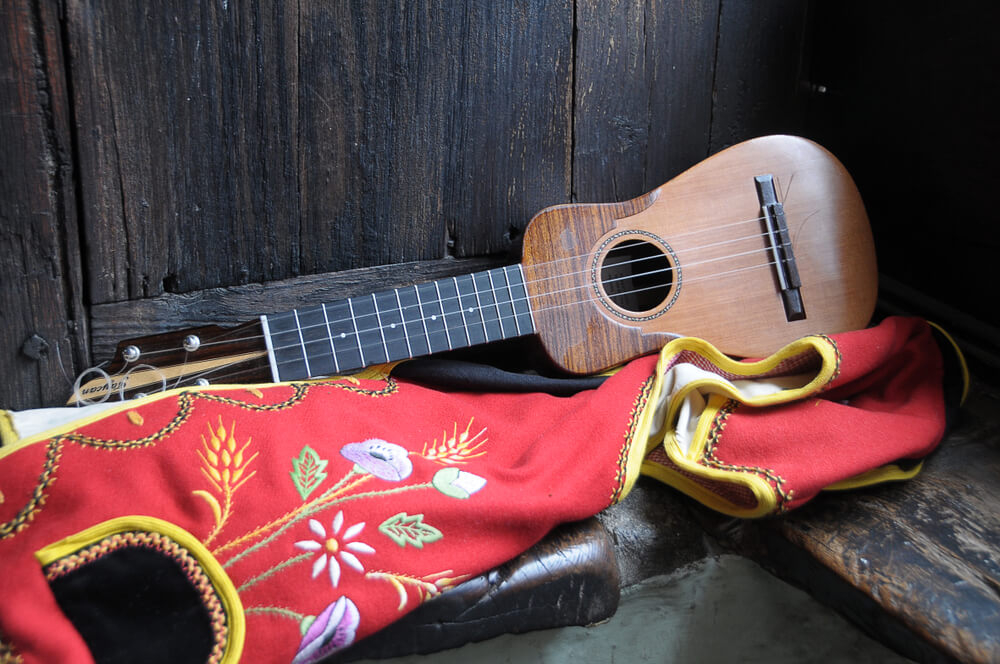Spanish tapas culture: everything you need to know
Tapas are world famous, but did you know that there are all different types of tapas throughout Spain? Everything you need to know about Spanish tapas.

You’ve almost certainly heard of spanish tapas in the past, and maybe even eaten them on multiple occasions, but unless you’ve spent a lot of time in Spain you probably aren’t an expert on the topic.
In the UK, a Spanish tapas bar often serves overpriced, tiny portions of generic Spanish food. They always go heavy on the olives and the serrano ham. But travel to the land of tapas and, you quickly find out that there’s a lot more to it.
You also soon realise that when it comes to Spanish cuisine, things vary hugely from one region to the next. In some regions, there’s very little tapas culture at all, or they’re known by a different name. And the etiquette surrounding tapas and the tapas themselves can change entirely between neighbouring cities, let alone neighbouring regions.
So, if you’re planning on taking a culinary trip to Spain, it’s best to read up a little beforehand and make sure you know what you should be keeping an eye out for, so that you make the most of your precious time eating delicious tapas, just as the locals do.
Before we take a look at how tapas culture varies from region to region today, let’s delve into the history books. We're going to think about the history of tapas in Spain.
The History of Tapas
Tapas are small portions of food eaten between or before meals with a drink, which is more often than not, alcoholic. Traditionally, they were free with a drink.
Wondering where the name comes from? The word ‘tapas’ comes from the verb ‘tapar’ which means to cover.

As is always the way, there are all kind of stories about where tapas originated from. One theory about the origin of Spanish tapas is that King Alfonso X of Castile once fell ill. He recovered by drinking wine and eating tapas between meals, and when he’d recovered he commanded that from then on, all wine served at inns had to be accompanied by food.
And that’s not the only royal legend surrounding tapas. Apparently, Alfonso XIII was offered his wine with a slice of ham to protect it from the sand from the beach at a tavern in Cadiz. He liked the idea, so he ordered another glass of wine with the cover, or ‘tapa’.
Lastly, some people also say that a law passed by Felipe III contributed to the Spanish tapas culture developing. To combat drunken behaviour among sailors and soldiers, it was decreed that every drink had to have a lid covering it with a small quantity of food on it, to line people’s stomachs and keep a lid on drunkenness, as it were.
But there are also some less anecdotal and more practical explanations as to why the practice gradually became widespread, and where the name came from.
They include the fact that a piece of bread or card would’ve often been used to cover a drink and protect it from flies, and over time people started to top that with a snack. Plus, as punters would often be standing in bars they’d use their glass as a stand for their plate.
Eating tapas in Spain today
Tapas have got a lot of history behind them, but they’re just as or even more popular today than they ever were. A trip focused on sampling the best Spanish tapas is one of the best culinary adventures out there.
You might be surprised to know that tapas aren’t traditional in all areas of Spain. In fact, they’re most traditional in the south, in areas such as Andalusia, Murcia, Extremadura, Ciudad Real and Leon.
How much do tapas cost?
Only in certain parts of these areas are the tapas free. For example, in the west of Andalusia, in the regions of Granada, Almeria and Jaen, tapas are free with a drink as standard, whereas if you find yourself in Malaga or Seville, then they’re charged separately, but the drinks are supposedly a little cheaper.
In somewhere like Madrid, there are bars that serve free tapas. But it definitely won’t be the case everywhere, so it’s a matter of playing it by ear.
As far as drinks go, a very standard order would be a small glass of beer, or a ‘caña’, red wine and lemonade, or a ‘tinto de verano’, or a glass of wine, but there is, of course, no obligation to drink alcohol. If the tapa is free, you’ll get one with a coke too!
If they’re free, then you’ll sometimes have a menu to choose from, but will often just be given whatever it is that’s been prepared that day. So if you’ve got any dietary requirements, always let them know when you order your drink. You’ll get a different tapa with your second drink, and so on and so forth. If you’re paying for tapas, then you’ll have a menu to choose from.
If you’re not sure how things work in the area or bar you’re in then don’t be shy. Ask the locals!

Are there vegetarian tapas?
Traditional Spanish tapas are often meat, fish or seafood-based, but there are also usually some accidentally-vegetarian traditional options. However, the sea, herbivores might struggle. However, nearly every tapas bar around will serve olives and Spanish omelette as a minimum.
Although Spain isn’t traditionally very vegetarian-friendly, things are rapidly changing. There are now vegetarian and vegan tapas bars in all of the big cities. But it can still be difficult to find something to eat in smaller towns and villages.
Are there different types of tapas in the north?
Tapas aren’t usually called tapas in the north of Spain. Traditionally in the Basque Country, Cantabria, La Rioja, Navarre and Asturias, the appetizers are known as pinchos. That's, because they have a toothpick (pincho) stuck through them to hold whatever topping it is to the piece of bread. These little sticks are often used to keep track of how many you’ve eaten, as you pay a euro or two per pincho.
San Sebastian in the Basque Country is especially famous for its gourmet pintxos, as it’s written in Basque.
And after all those Spanish tapas, what if I’m still hungry?
People often do make several tapas into a meal, especially if they’re free. However, if you’re paying for tapas then it’s often better to go for bigger portions or ‘rations’.
In most parts of Spain, you can order a half portion (media ración) or a whole portion (ración) of food designed to be shared. That can work out much cheaper for groups.
Spain is the perfect destination for culinary adventure travel, so don’t hold back! Seek out the bars that the locals frequent and sample the local delicacies. Go on, you deserve it.









_435x320?&)
